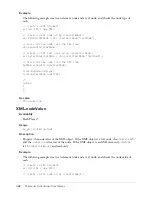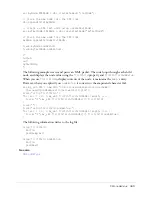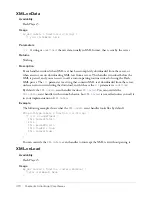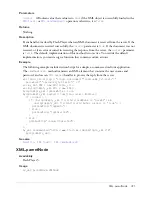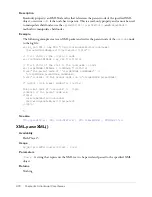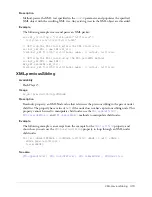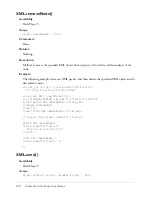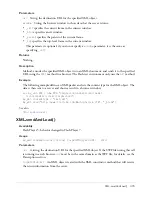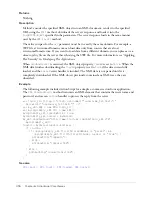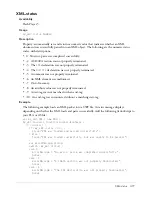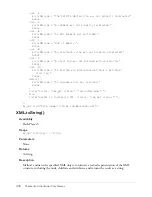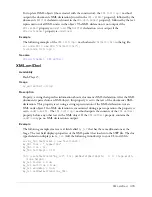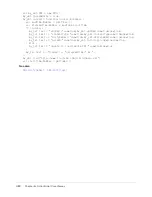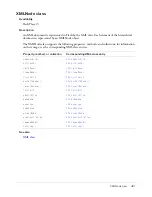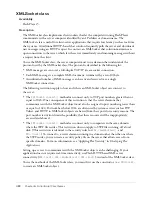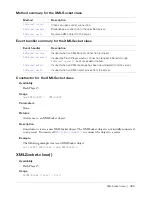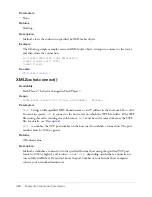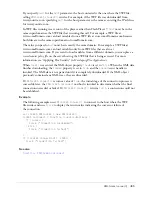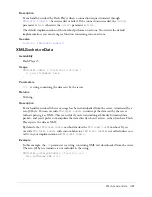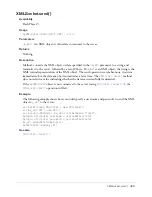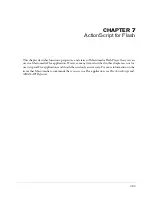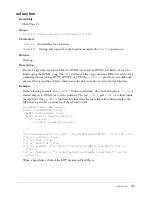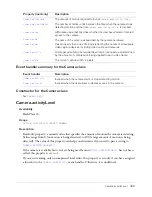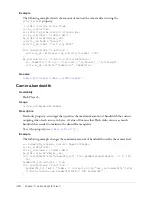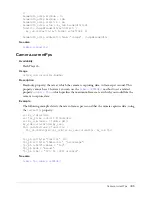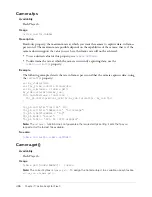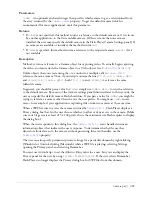
482
Chapter 6: ActionScript Core Classes
XMLSocket class
Availability
Flash Player 5.
Description
The XMLSocket class implements client sockets that let the computer running Flash Player
communicate with a server computer identified by an IP address or domain name. The
XMLSocket class is useful for client-server applications that require low latency, such as real-time
chat systems. A traditional HTTP-based chat solution frequently polls the server and downloads
new messages using an HTTP request. In contrast, an XMLSocket chat solution maintains an
open connection to the server, which lets the server immediately send incoming messages without
a request from the client.
To use the XMLSocket class, the server computer must run a daemon that understands the
protocol used by the XMLSocket class. The protocol is described in the following list:
•
XML messages are sent over a full-duplex TCP/IP stream socket connection.
•
Each XML message is a complete XML document, terminated by a zero (0) byte.
•
An unlimited number of XML messages can be sent and received over a single
XMLSocket connection.
The following restrictions apply to how and where an XMLSocket object can connect to
the server:
•
The
XMLSocket.connect()
method can connect only to TCP port numbers greater than or
equal to 1024. One consequence of this restriction is that the server daemons that
communicate with the XMLSocket object must also be assigned to port numbers greater than
or equal to 1024. Port numbers below 1024 are often used by system services such as FTP,
Telnet, and HTTP, so XMLSocket objects are barred from these ports for security reasons. The
port number restriction limits the possibility that these resources will be inappropriately
accessed and abused.
•
The
XMLSocket.connect()
method can connect only to computers in the same domain
where the SWF file resides. This restriction does not apply to SWF files running off a local
disk. (This restriction is identical to the security rules for
XML.sendAndLoad()
, and
XML.load()
.) To connect to a server daemon running in a domain other than the one where
the SWF resides, you can create a security policy file on the server that allows access from
specific domains. For more information, see “Applying Flex Security” in
Developing Flex
Applications
.
Setting up a server to communicate with the XMLSocket object can be challenging. If your
application does not require real-time interactivity, use Flash HTTP-based XML server
connectivity (
XML.load()
,
XML.sendAndLoad()
,
XML.send()
), instead of the XMLSocket class.
To use the methods of the XMLSocket class, you must first use the constructor,
new XMLSocket
,
to create an XMLSocket object.
CHAPTER 6
ActionScript Core Classes
Summary of Contents for FLEX-FLEX ACTIONSCRIPT LANGUAGE
Page 1: ...Flex ActionScript Language Reference...
Page 8: ......
Page 66: ...66 Chapter 2 Creating Custom Classes with ActionScript 2 0...
Page 76: ......
Page 133: ...break 133 See also for for in do while while switch case continue throw try catch finally...
Page 135: ...case 135 See also break default strict equality switch...
Page 146: ...146 Chapter 5 ActionScript Core Language Elements See also break continue while...
Page 808: ...808 Chapter 7 ActionScript for Flash...
Page 810: ...810 Appendix A Deprecated Flash 4 operators...
Page 815: ...Other keys 815 Num Lock 144 186 187 _ 189 191 192 219 220 221 222 Key Key code...
Page 816: ...816 Appendix B Keyboard Keys and Key Code Values...
Page 822: ...822 Index...

